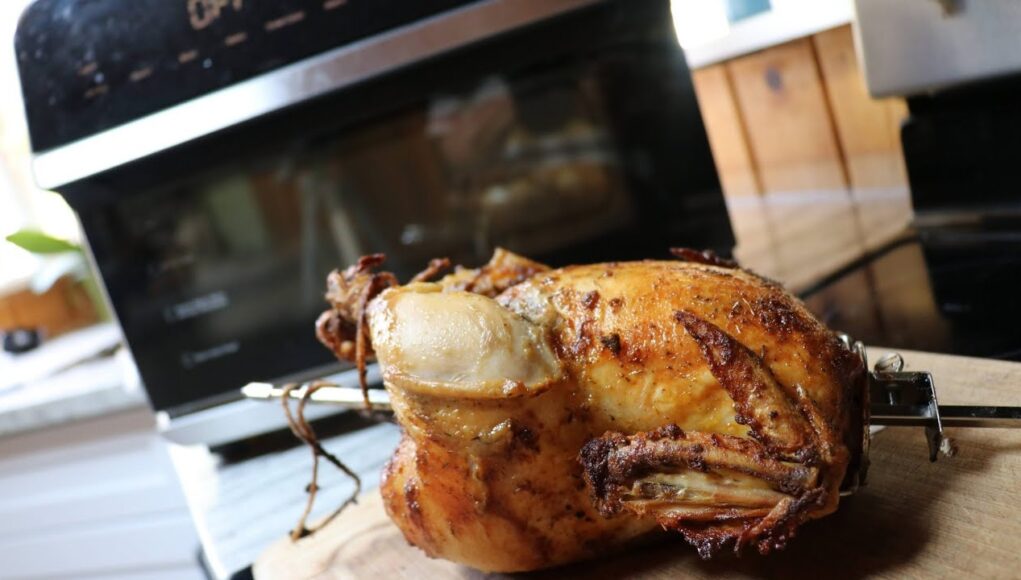Slicing a rotisserie chicken can be a daunting task, especially if you are not familiar with the process. But fear not, as we will share some terrific tips to make this task easy and enjoyable. Knowing how to slice a rotisserie chicken not only makes serving it easier but also ensures you savor every bit of its deliciousness. Let’s dive in!

Why Slicing a Rotisserie Chicken Matters
Understanding the importance of properly slicing your chicken can enhance your entire dining experience. A well-sliced rotisserie chicken not only looks appealing on the platter but also allows for better portion control and makes it easier for your guests to enjoy. Additionally, slicing the chicken correctly ensures you get the most out of every part, reducing waste.

Pre-Slicing Preparations
Choosing the Right Tools
Before slicing, having the right tools on hand is crucial. You’ll need a sharp carving knife and a sturdy cutting board. A carving fork can be helpful but is not essential.
Resting the Chicken
Allow the chicken to rest for about 10-15 minutes after cooking. This step lets the juices redistribute throughout the meat, making it more tender and flavorful.
Safe Handling Tips
Practice safe handling techniques by washing your hands and utensils before and after handling the chicken to avoid cross-contamination.

Step-by-Step Guide on How to Slice a Rotisserie Chicken
Step 1: Position the Chicken
Place the rotisserie chicken breast-side up on the cutting board. Position it securely to prevent any slipping.
Step 2: Remove the Legs and Thighs
Start by cutting through the skin between the leg and the body. Use your knife to separate the leg from the thigh joint, and then the thigh from the body.
Step 3: Carve the Wings
Next, cut through the joint where the wing attaches to the body. Gently pull the wing away and cut through the remaining skin and meat to fully detach it.
Step 4: Slice the Breasts
To slice the breast meat, find the breastbone in the middle and make a long cut down one side. Continue slicing along the ribcage, carefully removing the breast meat in a single piece if possible.
Step 5: Serve and Enjoy
Arrange the sliced chicken pieces on a platter. Each piece should be easy to pick up and enjoy.
Expert Tips for Perfect Slices
Use a Sharp Knife
A sharp knife helps you achieve clean slices without tearing the meat. Ensure your knife is sharpened before you start slicing.
Follow the Natural Segments
Chickens have natural segments that guide where to slice. Following these segments makes the process easier and helps preserve the meat’s texture.
Practice Patience
Take your time while slicing. Rushing can lead to uneven cuts and a less enjoyable presentation.
Common Mistakes to Avoid
Using a Dull Knife
A dull knife makes slicing a tough and messy task. Always use a sharp knife for best results.
Skipping the Resting Period
Skipping the resting period can result in dry, less flavorful meat. Always let your chicken rest before slicing.
Improper Handling
Improper handling can introduce bacteria to your food. Always follow safe handling practices.
What to Do with Leftover Rotisserie Chicken
Leftover rotisserie chicken can be used in a variety of dishes. You can make sandwiches, salads, or soups. The options are endless!
Final Thoughts
Slicing a rotisserie chicken doesn’t have to be intimidating. With the right tools, proper technique, and a little bit of patience, you’ll be slicing like a pro in no time. Now that you know how to slice a rotisserie chicken, why not try it out and impress your family and friends?
FAQs
What knives are best for slicing a rotisserie chicken?
A sharp carving knife or a chefs knife works best for slicing a rotisserie chicken.
How long should I let the chicken rest before slicing?
Let the chicken rest for about 10-15 minutes to allow the juices to redistribute.
How can I use leftover rotisserie chicken?
Leftover rotisserie chicken can be used in sandwiches, salads, soups, and many other dishes. Heres a useful guide on what to do with leftover rotisserie chicken.
As an Amazon Associate, I earn from qualifying purchases.





